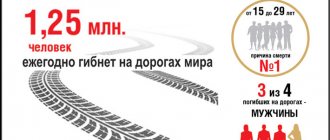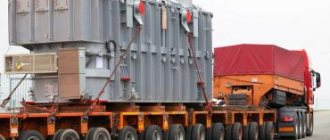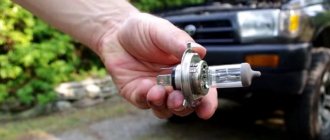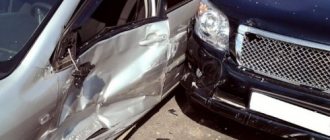Do you need a car seat?
A car seat for newborns is necessary from the very first days of a child’s life, starting from the threshold of the maternity hospital. You cannot do without a baby car seat and transport your baby in a car in the arms of adults, since according to current legislation, the use of child restraints is mandatory.
While the child does not sit independently, the car seat installed in the car provides him with:
- comfortable position and reliable fixation in the car;
- convenience when carrying a baby sleeping in a cradle;
- practicality for regular trips to clinical examinations.
In case of emergency braking or sudden maneuver of the car, the convenient design of the car seat ensures complete safety for the baby.
At what age can you drive without a seat and stop worrying about getting a fine?
We previously found out that you can ride without a seat from the age of 7 if you have ISOFIX fastening belts. And from the age of 12, securing the child with seat belts installed in the car.
What happens if there is no seat in the cabin, and the baby rides in your arms or on the seat?
- A fine of 3,000 rubles for an ordinary person (father, mother).
- A fine of 25,000 per official.
- Fine 100,000 rubles per legal entity.
If the car did not have a restraint device, but there was a seat, you can be happy. A 50% discount applies to everyone. But this is unlikely to ease the situation of a legal entity; 50,000 is also not a small amount. The police have every right to stop you and issue you a fine for child neglect. And he will do the right thing.
Let's remember the 2021 law. Children under 7 years old cannot be left alone in an indoor/outdoor cabin. The amount will be a small amount - 500 rubles. In large cities of Russia (Moscow, St. Petersburg) the cost of an error will be 2500-3000 rubles.
Results:
- Children cannot be transported by hand or on motorcycles.
- Children under 12 years of age must be secured with seat belts, car seats, bassinets, and restraint devices.
- The car seat should be selected individually for the baby, taking into account height, weight, age.
- Do not ride children under 12 years old in the back, it is extremely unsafe.
Pay attention to established laws and do not neglect to comply with them. Remember, when you get behind the wheel, not only your life depends on you, but also the lives of your friends, children, and parents. Be calm and attentive, follow the traffic rules.
Add AN to your sources so as not to miss important events - Yandex News
- At what age can children be transported without a special seat?
- Latvian MP: EU got hit in the face
- Political scientist Sergei Markov: “Lukashenko simply shocked the world”
- The ocean has figured out how to deal with plastic waste, how can this end for humans?
- Construction of Nord Stream 2 is already underway in German territorial waters under the protection of 4 ships
- Chelyabinsk knows the rules of the road better than anyone in the country
- Northern Fleet ships seriously frightened the crew of the aircraft carrier Queen Elizabeth
Become a member of the CLAN and every Tuesday you will receive the latest issue of “Arguments of the Week” with a discount of more than 70%, along with exclusive materials not included in the newspaper. Get premium access to a library of the most interesting and popular books, as well as an archive of more than 700 published issues for FREE. In addition, you will have the opportunity to benefit from free legal advice from our experts for a whole year.
- Enter your email address, then select any convenient payment method for your annual subscription
- Scan the QR. In the Sberbank Online application that opens, enter the annual subscription cost (490 rubles). Then send the confirmation code by email
Or
At what age can you use an infant seat?
When choosing a car seat, they focus on such an indicator as the group - it is calculated based on the age and weight of the baby.
There are three groups of infant carriers for newborns:
- group 0 – age from birth to 6 months, weight up to 10 kg;
- group 0+ – age from birth to 1.5 years, weight up to 13 kg;
- group 0+/1 universal – age from birth to 4 years, weight up to 18 kg.
Car seats of higher groups are intended for children from 4 to 12 years old.
Child seat up to age, Russian law
The traffic rules have prescribed requirements that are important to comply with for the safety of the child. First of all, the law specifies that children under 16 years of age can only be transported in the passenger compartment of a passenger car or in the cabin of a truck. But you shouldn’t think that once you turn 16 years old, you can ride in the back of a child – this is a violation.
You can also forget about motorcycles and mopeds. Do not seat children behind you; if you are planning to ride a motorcycle, it is better to sit them in front of you and try to hold them as tightly as possible. Although in an emergency situation with a moped, no scheme for transporting a child will save either the baby or the driver.
“It is worth learning one law of physical strength. In the event of a traffic accident, the weight of a small passenger doubles. Therefore, do not take children in your arms if you are planning to go somewhere. Install a child car seat for everyone's safety."
Drivers who carry more than 7 child passengers in a car must obtain a special permit. It is issued by the MREO after practical training and testing.
Newly introduced traffic rules:
In Russia, the rules for transporting children have always been in force, but in 2017 they were slightly changed. From 2021, parents do not have the right to leave a small child alone in a car. Also, the case concerned the use of car seats. Now let's look at the points
- Until what age do children ride in a chair? If the car has special seat belts, then transportation of children under 12 years of age is possible only in a special device. This could be a chair or a cradle for very small children.
- Infants should ride in bassinets, which are installed in the back row, to the right of the driver. We will describe in detail below the rules for transporting other children.
Advantages and disadvantages
At what age can you use an infant carrier? Newborns are transported only in a group 0 car seat, in which the child can be in a lying position.
This design is used as a cradle, carrying and rocking chair from birth, and has the following features:
- a car seat is placed in the back seat;
- attached sideways in the direction of travel of the car (perpendicular to the driver’s seat);
- is equipped with internal seat belts, with which you can fasten and securely hold the baby in a horizontal position.
To transport a baby in a car, the use of a multifunctional stroller design as a car seat for newborns is excluded, since its shock-absorbing properties do not meet current safety standards.
A group 0+ car seat, compared to a regular car seat, is considered a safer model and meets the following characteristics:
- provides the baby with a semi-lying position at an angle of 30–45 degrees;
- has small weight and dimensions;
- can be used for a longer period of time;
- combines the functions of a car seat and carrying;
- easily transforms into a stroller;
- equipped with high protection against side and frontal impacts;
- ergonomic design eliminates stress on the spine.
To transport children under 1 year of age, the car seat is secured with its back in the direction of travel of the car. With this installation, the child's neck and head will be pressed tightly against the back of the car seat. Therefore, if the car brakes sharply, a child sitting with his back to the driver’s seat will not receive damage.
If the baby is placed facing the direction of travel of the car, then the shock load will be directed to the baby’s chest and abdomen, and the head will make a sharp “nod,” which will unnecessarily load the cervical vertebrae and lead to inevitable injuries.
When installing a car seat in the front seat of a car, you should place your baby comfortably and turn off the front airbag so that in the event of an accident it does not injure the child.
The universal model of group 0+/1, combines the characteristics of both groups and is suitable for large babies from birth. When purchasing such a prototype, savings are possible on intermediate groups of car seats.
Distinctive features of this sample:
- adjustable headrest height and seat width;
- changing the angle of the backrest;
- adjusting belt tension;
- the ability to permanently secure the infant seat in the cabin;
- cannot be carried like a cradle;
- lower safety compared to group 0+.
After the first year of a child’s life, models of group 0+/1 should be installed in the direction of travel of the car.
Children from seven to twelve years old
Up to what age a car seat is needed depends on where the child is located in the car. If he rides in the back seat, then after seven years he is already allowed to fasten him with a regular seat belt. However, experts advise focusing not on the letter of the law, but on the height and weight of the child. If the heir is still too small and weighs less than 36 kg and is less than 150 cm tall, then it is better to use a chair, which guarantees greater safety. But as soon as the child crosses this physical threshold, the frame restraining device will simply not be enough for him. In this case, the car's belts will provide optimal results.
But, no matter what the height and weight of the child, when traveling in front he should only sit in the seat. Until what age is a car seat used? Until the child turns twelve years old. Only in this case the driver has the right to secure the young passenger with the seat belt provided with the car. But, if the airbag must be turned off when transporting a baby, now it must be activated.
Car seat or car seat?
The infant carrier can be used from birth until the child reaches 4 years of age. For older children, car seats with a more expanded functional range are available.
Factors in favor of the infant carrier:
- creates a natural position for the newborn when his chest is not compressed;
- ensures a ride without sudden jolts and with maximum motion sickness effect;
- guarantees deep sleep with natural vibrations.
In a car seat, you can transport your baby over long distances without compromising his health.
The disadvantages of this design include:
- short period of use (up to six months);
- The dimensions of the structure are quite large, so the car seat completely occupies the back seat of the car, leaving practically no space for the passenger;
- external fastening is provided only by car seat belts.
The car seat is installed on the front or rear passenger seats and has the following positive characteristics that affect the factors of convenience and strength when moving a child in the car:
- quick transformation mechanism - makes it possible in a short time to transform the car seat into a carrier intended for walking on the wheelbase of a stroller, or for transportation by air or other means of transport;
- orthopedic base of the car seat – provides a soft and comfortable position;
- adjustable height of the backrest, inserts and footrest - creates a comfortable position;
- ventilated, water-repellent and hypoallergenic fabric - does not cause discomfort in the child;
- 3 or 5 point seat belts, with soft pads on children's shoulders - securely fasten and hold the baby;
- adjustable handles of modern models - serve for quick removal and subsequent transportation of the cradle;
- shockproof frame and polystyrene layer - absorbs the force of a possible impact;
- internal seat belt – creates conditions for rigid fixation.
In car seats for newborns, you can transport a child for no more than one and a half hours without interruption.
The safety of the baby when traveling by car is influenced by the quality of the car seat and the presence of special documents from the manufacturer confirming the guarantee of reliability.
Age, weight and height appropriate for boys
| Age | Weight, kg | Height, cm |
| 1 month | 4,3 | 54 |
| 2 months | 5,1 | 57 |
| 3 months | 5,8 | 60 |
| 4 months | 6,6 | 63 |
| 5 months | 7,2 | 66 |
| permissible difference | +/- 0,8 | +/- 4 |
| 6 months | 7,9 | 68 |
| 7 months | 8,4 | 70 |
| 8 months | 8,8 | 72 |
| 9 months | 9,2 | 73 |
| 10 months | 9,7 | 74 |
| 11 months | 10,2 | 75 |
| permissible difference | +/- 1,5 | +/- 4 |
| 12 months | 10,4 | 76 |
| 1.5 years | 11,6 | 82 |
| 2 years | 12,7 | 88 |
| 2.5 years | 13,7 | 93 |
| permissible difference | +/- 2,5 | +/- 6 |
| 3 years | 14,7 | 97 |
| 3.5 years | 15,6 | 101 |
| 4 years | 17 | 105 |
| permissible difference | +/- 3 | +/- 7 |
| 4.5 years | 17,8 | 108 |
| 5 years | 19,2 | 112 |
| permissible difference | +/- 3,5 | — |
How to choose a car seat
Having chosen the model you like, you need to make sure that the infant carrier or car seat has a certificate of compliance with European quality standards. Appropriate marking means that the car seat is manufactured according to the same parameters that every manufacturer must adhere to when manufacturing a children's car device
Namely:
- tension belts are equipped with an adjustment mechanism;
- the fastenings are equipped with locks and completely prevent spontaneous unfastening;
- minimum strap width 25 mm;
- metal parts of the car seat have an anti-corrosion coating;
- plastic parts have shockproof properties.
The presence of a safety certificate from the manufacturer confirms that standardization, testing, the necessary crash tests have been carried out, verification of compliance with the proper configuration and the availability of detailed operating instructions for the infant carrier.
As confirmation, models are affixed with official orange stickers with the following mandatory signs:
- ECE-R 44 /03 or 04 – unified marking for the certificate of conformity;
- car seat type – group number;
- child's weight - pounds or kg;
- a circle with a capital letter E and a number in the center of the icon is the code of the country in which the car seat was tested for compliance with shock loads;
- six-digit number – a unique code assigned to this type of product during testing;
- name of the product manufacturer – country of origin.
It is important to match the spaciousness of the car interior and the dimensions of the infant carrier. It would not be amiss to have additional options in car seat models such as protective sun visors and removable covers for subsequent washing.
Used infant carriers lose their functional purpose, as they undergo various deformations during operation, which makes them unsuitable for transporting newborns.
Age, weight and height appropriate for girls
| Age | Weight, kg | Height, cm |
| 1 month | 4,1 | 53 |
| 2 months | 4,8 | 56 |
| 3 months | 5,4 | 59 |
| 4 months | 6 | 62 |
| 5 months | 6,7 | 64 |
| permissible difference | +/- 0,8 | +/- 4 |
| 6 months | 7,4 | 66 |
| 7 months | 8 | 68 |
| 8 months | 8,5 | 70 |
| 9 months | 8,9 | 72 |
| 10 months | 9,3 | 73 |
| 11 months | 9,6 | 74 |
| permissible difference | +/- 1,5 | +/- 4 |
| 12 months | 9,8 | 75 |
| 1.5 years | 11,1 | 81 |
| 2 years | 12,2 | 88 |
| 2.5 years | 13,3 | 91 |
| permissible difference | +/- 2,5 | +/- 6 |
| 3 years | 14,3 | 96 |
| 3.5 years | 15,2 | 100 |
| 4 years | 16,5 | 104 |
| permissible difference | +/- 3 | +/- 7 |
| 4.5 years | 17,4 | 107 |
| 5 years | 18,6 | 111 |
| permissible difference | +/- 3,5 | — |
Rate this page
3.8 / 130
How to properly install and fasten the infant carrier
In the back seat of a car, only car seat belts are used to secure a group 0 infant carrier.
To install group 0+ and 0+/1 car seats in a car, two types of fastening are used - elastic belts that are pulled through special slots in the car seats and the Isofix fixation system.
The Isofix system is a metal base with two guide rails on which a child car seat is installed and permanently mounted. The use of this design prevents the chair from spontaneously moving or tipping over. In the event of an impact, the base platform prevents the child seat from moving forward. The Isofix retractable leg, fixed to the floor of the car, keeps the seat from sliding backwards.
When attaching the system, you should always focus on the green color of the design button, which means that the mount is installed correctly and securely.
Useful video with instructions for attaching a car seat with the Isofix system
The Isofix base is sold complete with a car seat or separately; installation is carried out with special brackets to the passenger seat of the car. When traveling frequently with a baby, using this design saves a lot of time and, compared to fastening with conventional seat belts, increases the protection of the child.
Liability provided
It’s worth figuring out at what age your child needs a car seat. So, if a child from seven to twelve years old is in the back seat without a seat and is not buckled up, the driver will receive a fine of 3,000 rubles. If there is no restraint device, but there are standard belts that secure the child, then the law has not been violated, and liability for the violation will not occur.
But for a teenager who travels in the front seat, a child seat is required. Up to what age this should be done is also explained in the law. According to the newly adopted rules - up to twelve years. The fine for failure to comply with this condition is also 3,000 rubles.
Rating of the best baby carriers for newborns
In the top of the best baby carriers for newborns among the rating of modern models, the brands of the following manufacturers meet the safety requirements, fashionable design and ease of installation:
Maxi-Cosi Cabriofix
It is characterized by high safety, mid-price range, and ease of installation.
Maxi-Cosi Pebble
It has a low cost, 2 types of fastenings, a removable cover and an awning for protection from the sun.
Recaro Privia
Features high quality materials and a higher price; has three fixed handle positions; The cradle has a light weight (up to 4 kg) and is equipped with an Isofix mount.
For Kiddy Lagun + Isofix Base
This is the lightest infant carrier weighing up to 3 kg, in which the headrest is height adjustable and can be used as a rocker.
BeSafe iZi Go Modular
Equipped with an orthopedic pillow, 5-point belts with soft pads, high-strength plastic and high-quality fabric.
Carmate Kurutto NT2 Premium
A Japanese model of a high level of reliability with a convenient rotating mechanism, the ability to change the angle of inclination to a lying position, the Isofix system with a retractable support leg.
Romer Baby Safe Plus
It is used as a carrycot, in which the child can be transported in a semi-lying position, has a fastening, is made of high-quality fabric, has an adjustable headrest and handles, and is equipped with a retractable hood.
Peg Perego Viggio Switchable
Inexpensive Italian brand belonging to group 0+/1; contains an adjustable mechanism that brings the back of the chair to a horizontal position; Possibility of installation in the direction and against the movement of the vehicle.
Concord Reverso Plus
It has a high safety rating according to crash tests and an Isofix fastening system; equipped with inserts for different ages and a removable cover, equipped with an adjustable tilt angle and additional side protection.
Small children should not travel in a car without car seats, so when choosing a model for newborns, you should not skimp on the child’s safety. It is necessary to give preference to models with side impact protection and the Isofix fastening system.
You should choose a car seat design with high-quality textiles and a body made of reliable metal alloys that have passed tests of the highest level, as this is directly related to the baby’s health and its vulnerability in emergency situations.
Author: Irina Kuchinskaya, especially for Mama66.ru
Rules for using a restraint device
According to crash tests, a child seat is recognized as the most reliable securing device. Up to what age it should be used is described above. But it's also important to do it right. To do this, you need to perform several steps:
- Choose a seat wisely based on the car you have, mounting options and the age of the child.
- Install it correctly. To do this, you can use the included instructions, or seek help from a professional.
- After the child is in the required position, he must be fastened, checking the fastenings and the level of tension of the belts. They shouldn't sag.
- Of course, while traveling, your baby may get bored. Only soft, rubber or silicone toys are suitable for entertainment. For newborns, special rattles are produced that are designed to be kept in the car.
- Very often, children watch cartoons or other educational programs. In this case, it is not recommended to give the tablet in your hands. The playback device must be secured to the back of the front seat with special fasteners.
- You can hand over a book, but it should be a small brochure with soft sheets of paper (not cardboard).
Useful video on how to choose a car seat for a child
Medical edition:
Site experts
Author
Irina Kuchinskaya
Author of the portal Mama66.ru
The site administration does not operate in the field of medical services. Consultations and recommendations are for informational purposes only and do not constitute full medical assistance. Any medical care is provided only in specialized medical institutions. If you have any symptoms, consult a doctor.
Share
How to use it correctly
Speaking of how old you can carry a child without a child seat - from 12 years old, but there are exceptions that have been discussed, otherwise it is impossible to do without it.
Using a car seat is quite simple; to do this, you need to follow simple rules:
Carefully study the instructions that come with the device. This is especially true for chairs without a backrest; move the front seat as far as possible so that it does not interfere with the installation of the child seat; It is necessary to install a child seat and tighten the belts as much as possible at the designated points. Secure the structure with additional clamps, which are included in the kit; make sure that the shoulder belt is fastened correctly and tightly enough; adjust the height of the standard belt, it will ensure safety in the event of an accident; check how well the chair is fixed; to do this, you need to move it
Allowable movement in different directions is no more than 1 centimeter; It's important to make sure everything is equipped correctly. For this, it will be enough for a young child to sit in a seat and fasten all the belts.
Before you start driving the car, you need to check the seat security
Additionally, it is recommended to pay attention to the belts. The child should feel comfortable in the chair, but not wobble too much
Why is it necessary to use a child seat?
The task of every parent is to ensure the safe passage of the child in the car. The requirement for car seats was introduced for a reason: in reality, in the event of an accident, a child secured in a seat has a greater chance of surviving.
Why use a chair:
- Safe transportation of a child. Crash tests have shown that children who are not secured in a seat hit the front seat and are thrown back, resulting in life-threatening injuries.
- Safety for the driver. Because babies and teenagers are often restless, they may suddenly interfere with someone who is driving, for example by throwing a toy at them. A child fixed in a chair has limited mobility.
- Safety while playing in the car. A restrained child can do whatever he wants without slipping or hitting himself.
With the advent of car seats, many women were able to drive a car by placing the child in the front or rear seat in a restraint system. Even in the event of an accident, the child will remain secured in the cradle or seat, and most likely will not receive dangerous injuries.
Rules for transporting children under one year old
From the moment of birth, it is recommended to use a car seat rather than a seat. This is due to the small size of the child and the inability of the newborn to sit. A car seat is a special device created specifically for a baby. There are various types of devices aimed at the baby’s weight, up to 10 kg, 15 kg, 20 kg. The principle of operation of the cradle is to place the child in a horizontal position and secure it with special internal belts.
Why, according to traffic rules, is it not a child seat that is recommended for infants, but a cradle? The bones and muscles are not sufficiently developed, so the skeleton is flexible and fragile up to 12 months. The weight of the head is quite large, it is 30% of the body weight, which means that undeveloped neck muscles cannot hold the head during sudden movements. In a horizontal position, the load on the spine and neck is minimal.
Infants must be transported in a secure infant carrier










